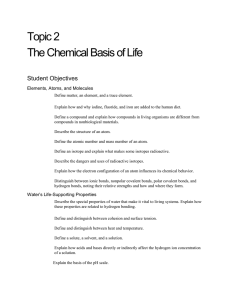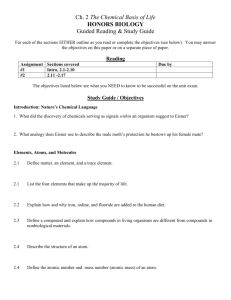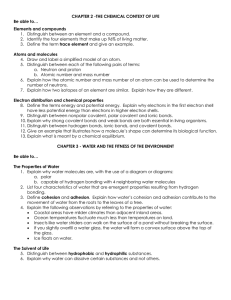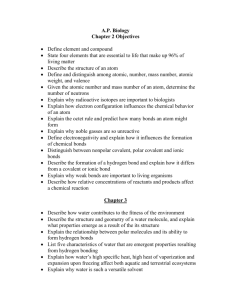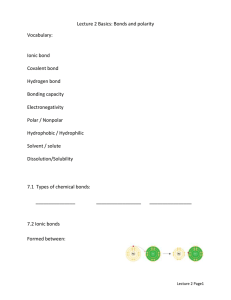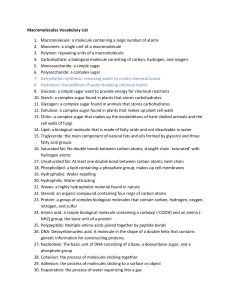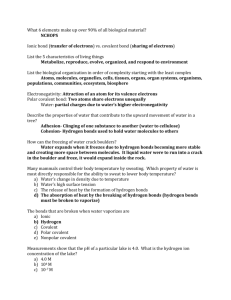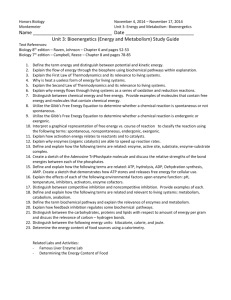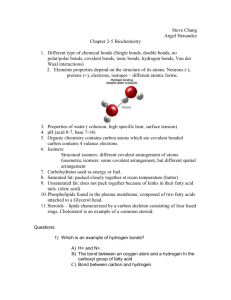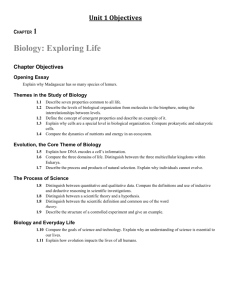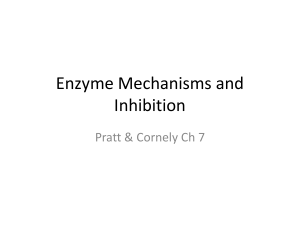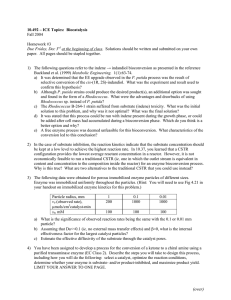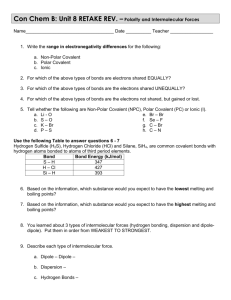Biochemistry Objectives
advertisement
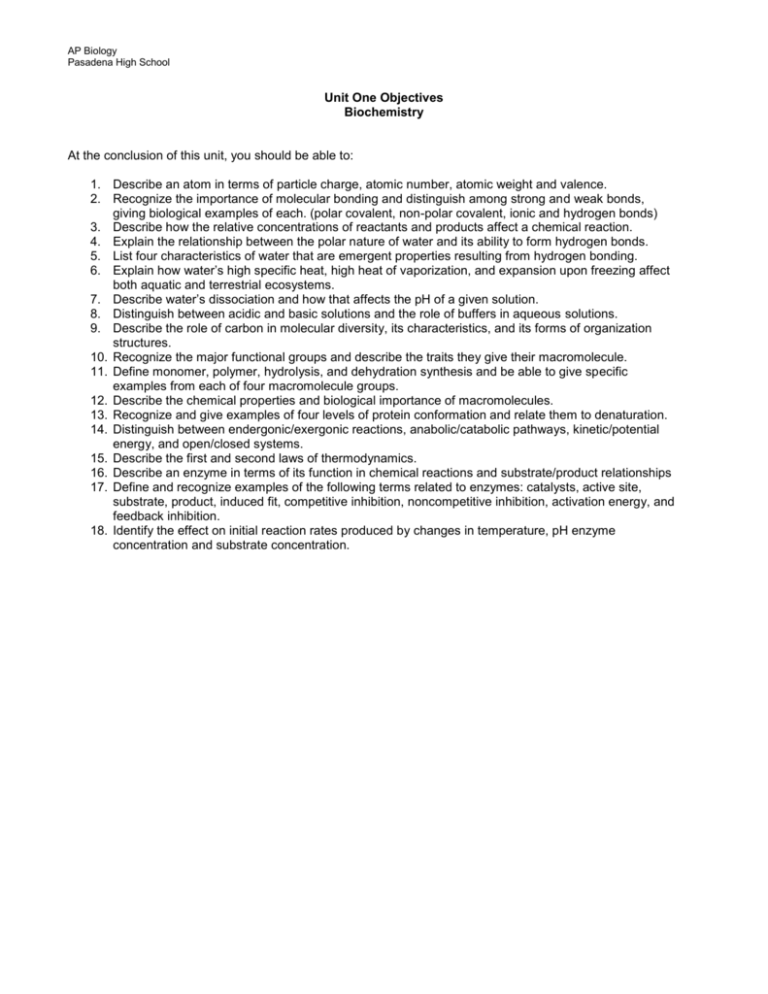
AP Biology Pasadena High School Unit One Objectives Biochemistry At the conclusion of this unit, you should be able to: 1. Describe an atom in terms of particle charge, atomic number, atomic weight and valence. 2. Recognize the importance of molecular bonding and distinguish among strong and weak bonds, giving biological examples of each. (polar covalent, non-polar covalent, ionic and hydrogen bonds) 3. Describe how the relative concentrations of reactants and products affect a chemical reaction. 4. Explain the relationship between the polar nature of water and its ability to form hydrogen bonds. 5. List four characteristics of water that are emergent properties resulting from hydrogen bonding. 6. Explain how water’s high specific heat, high heat of vaporization, and expansion upon freezing affect both aquatic and terrestrial ecosystems. 7. Describe water’s dissociation and how that affects the pH of a given solution. 8. Distinguish between acidic and basic solutions and the role of buffers in aqueous solutions. 9. Describe the role of carbon in molecular diversity, its characteristics, and its forms of organization structures. 10. Recognize the major functional groups and describe the traits they give their macromolecule. 11. Define monomer, polymer, hydrolysis, and dehydration synthesis and be able to give specific examples from each of four macromolecule groups. 12. Describe the chemical properties and biological importance of macromolecules. 13. Recognize and give examples of four levels of protein conformation and relate them to denaturation. 14. Distinguish between endergonic/exergonic reactions, anabolic/catabolic pathways, kinetic/potential energy, and open/closed systems. 15. Describe the first and second laws of thermodynamics. 16. Describe an enzyme in terms of its function in chemical reactions and substrate/product relationships 17. Define and recognize examples of the following terms related to enzymes: catalysts, active site, substrate, product, induced fit, competitive inhibition, noncompetitive inhibition, activation energy, and feedback inhibition. 18. Identify the effect on initial reaction rates produced by changes in temperature, pH enzyme concentration and substrate concentration.
